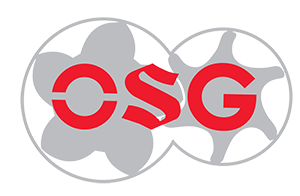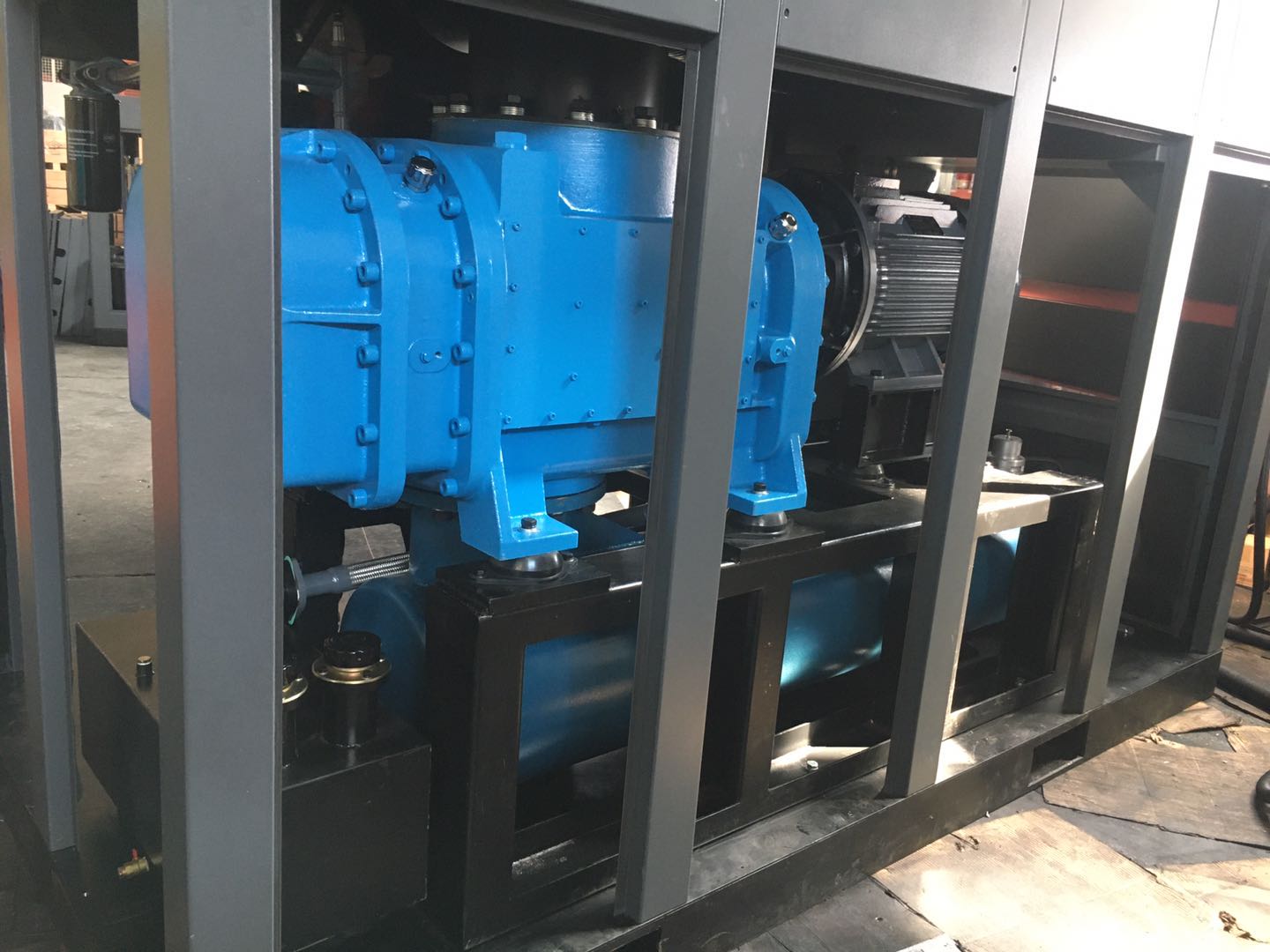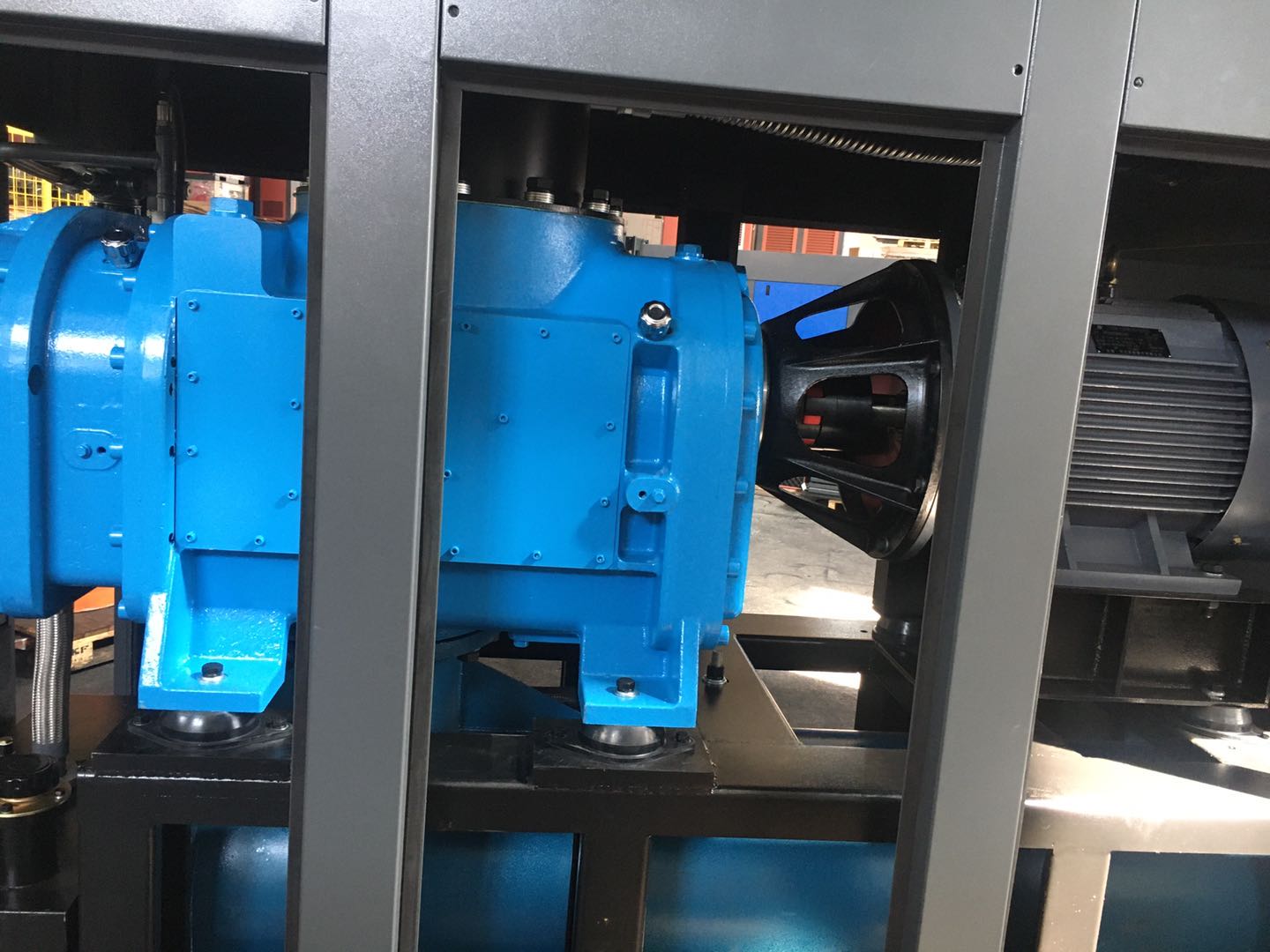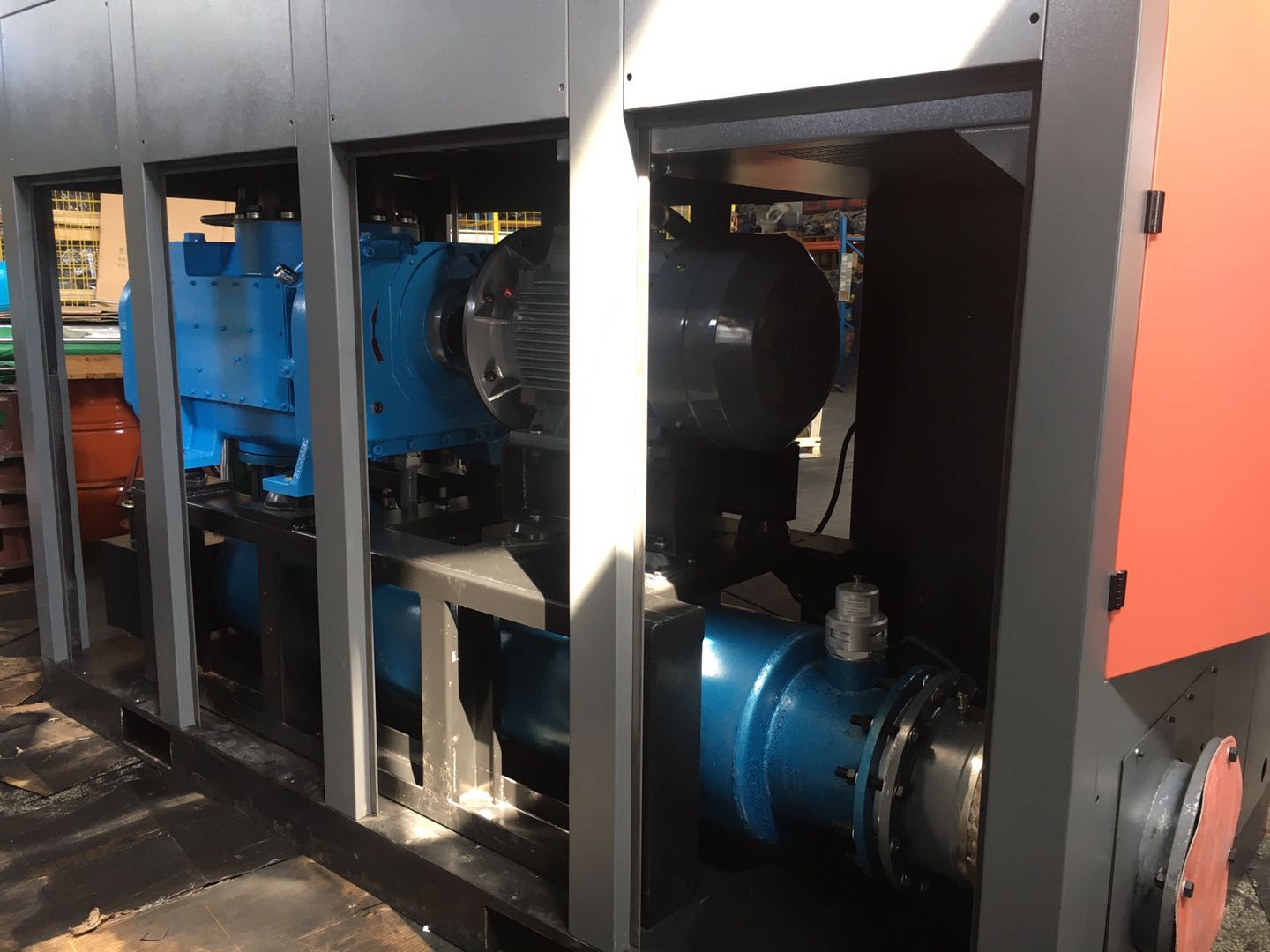Blower classification and subdivision product comparison
The blower refers to the fan whose total outlet pressure is 30-200kPa under the design conditions. According to different structures and working principles, blowers are usually divided into positive displacement and turbine. Positive displacement blowers compress and transport gas by changing the volume of the gas, commonly known as Roots blowers and screw blowers; turbine blowers compress and transport gas through rotating blades, mainly including centrifugal and axial flow. At present, the most widely used are Roots blower and centrifugal blower.
A centrifugal blower is generally composed of an impeller, a volute, a motor, a frequency converter, a bearing, a control system, and a box, among which the impeller, the motor, and the bearing are the main core components. Compared with the Roots blower, the centrifugal blower has a wider selection range in terms of boost pressure and flow parameters, and has the characteristics of high efficiency, low noise, and stable operation. Chemical industry and new environmental protection fields such as sewage treatment, waste heat recovery, desulfurization and denitrification. Centrifugal blowers mainly include traditional single-stage centrifugal blowers, multi-stage centrifugal blowers, air suspension centrifugal blowers and magnetic suspension centrifugal blowers representing advanced technology in the industry.
Traditional single-stage and multi-stage centrifugal blowers have complex structures, high failure rates, heavy maintenance workload and high maintenance costs, and are prone to leakage of lubricating oil and grease, causing environmental and compressed air pollution.
The magnetic levitation centrifugal blower adopts the magnetic levitation bearing technology, which saves the complex gear box and oily bearing necessary for the traditional blower, and achieves no lubricating oil and no mechanical maintenance, which effectively reduces the user's later maintenance cost. The magnetic levitation bearing control system is more complicated. , The product has high technical content and long service life.
Air suspension bearings are bearings that use air as a lubricant. Air as a lubricant has the characteristics of low viscosity, and its chemical properties are more stable than liquids in a wide temperature range. The equipment required to press in and extract the liquid lubricant, the bearing structure is simplified, the bearing cost is reduced, and it has the advantages of reducing vibration, reducing noise and keeping the compressed medium free from pollution. It has been widely used in the blower industry in recent years. The air suspension centrifugal blower uses air bearings, direct coupling technology, high-efficiency impellers, high-speed motors, no additional friction, almost no vibration, no special installation foundation is required, and the installation layout is simple and flexible.
Blower Industry Policy
Blowers are general-purpose machinery, and the development of the industry is influenced by and supported by national equipment manufacturing policies. At the same time, under the background of the country's vigorous promotion of green manufacturing, energy conservation and emission reduction, high-efficiency blower products will be the focus of future development. The following are the current main industry policies:
Blower Industry Development Overview and Trends
(1) Development overview of blower industry
my country's blower manufacturing began in the 1950s. At this stage, it was mainly a simple imitation of foreign products; in the 1980s, my country's major blower manufacturers began to implement standardized, serialized, and generalized joint design, which greatly improved the overall design and manufacturing level. Developed a centrifugal blower product suitable for the needs of the time.
In the 1990s, major domestic blower manufacturers continued to introduce foreign advanced production technology on the basis of cooperation with foreign companies. Through digestion, absorption and trial production, the R&D and manufacturing level of Roots blowers in my country has been significantly improved, and the centrifugal blower has also initially been equipped. Design and manufacturing capabilities; the overall technical level of the blower industry is rapidly improving, domestic blowers can basically meet the needs of my country's industrial production, and gradually replace imports.
After 2000, the overall output of my country's blower industry showed an upward trend, and products such as Roots blowers began to be exported to many countries and regions. In 2018, the output of my country's blower industry was about 58,000 units, a year-on-year increase of 11.9%. Among them, the market share of Roots blowers accounted for 93%, and the market share of centrifugal blowers accounted for 7%.
Compared with leading foreign companies, my country's blower products started relatively late. With the rapid growth of the domestic economy, the demand for the blower industry is increasing. According to statistics from Compressor.com, the domestic blower market size in 2019 is about 2.7 billion yuan. In the future, with the rapid development of downstream application fields such as electric power and sewage treatment, the demand for blowers will further increase. It is expected that the blower market will maintain a growth rate of 5%-7% in the next three years.
(2) Development Trend of Blower Industry
① Efficiency
In recent years, with the development trend of high-end, intelligent, and green domestic manufacturing, some blower companies have aimed at the pain points of energy conservation and consumption reduction that restrict the development of the industry. Large-scale blower companies have continuously achieved results in the exploration and innovation of new energy-saving and environmental protection industrial technologies. However, most small and medium-sized blower companies still stay in the field of low value-added products, which has become one of the pain points in the development of the blower industry. Improving efficiency and reducing energy consumption are the inevitable development directions of blowers.
② High-speed miniaturization
Increasing the rotating speed can effectively promote the miniaturization of the blower, and achieve the effects of reducing volume and weight while improving efficiency. However, increasing the impeller speed has higher requirements for the impeller material, sealing system, bearing system and rotor stability of the blower, which is a problem that needs to be studied and solved in the development of the blower.
③Low noise
The noise of the blower is mainly aerodynamic noise, and the noise problem of the large blower is prominent. Its speed is low, the noise frequency is low, and the wavelength is long, so it is not easy to block and eliminate. At present, the research on noise reduction and noise reduction of blowers is constantly deepening, such as the design of various tuyere shapes of the casing, the use of backflow noise reduction, resonance noise reduction, etc.
④ Intelligent
With the continuous expansion of the scale of various domestic industrial devices, the requirements for production process control have developed from single working condition parameter control to multi working condition parameter control in order to better meet the requirements of the production process. Various operating parameters of the blower can be effectively controlled by using PLC, single-chip microcomputer or PC, and the operating parameters of the blower can be automatically adjusted in real time according to the change of the working condition parameters to meet the requirements of the process, and the pressure, temperature, vibration, etc. Parameter monitoring to protect the safe operation of the fan.
Post time: Apr-24-2023











